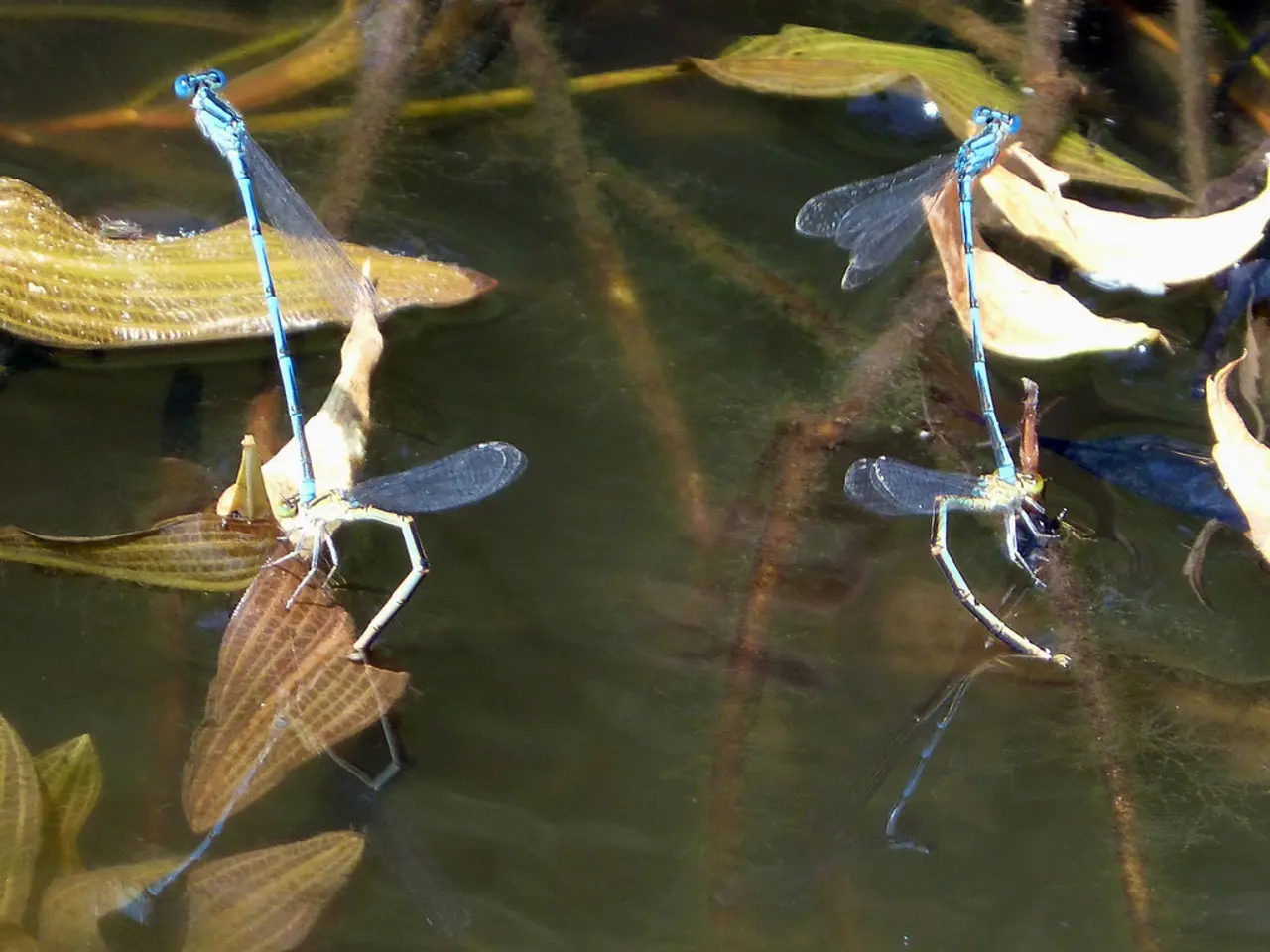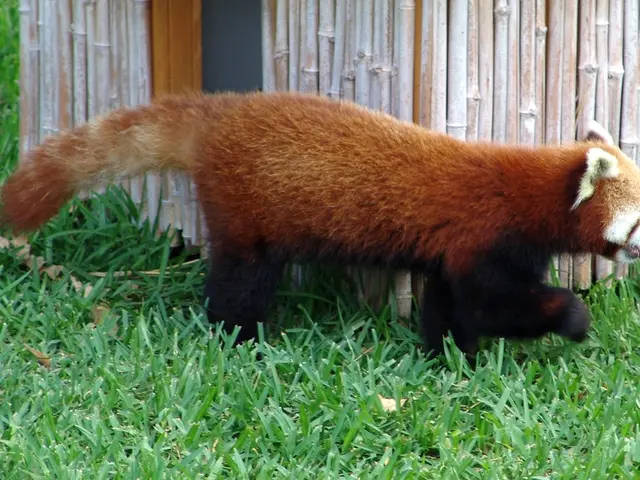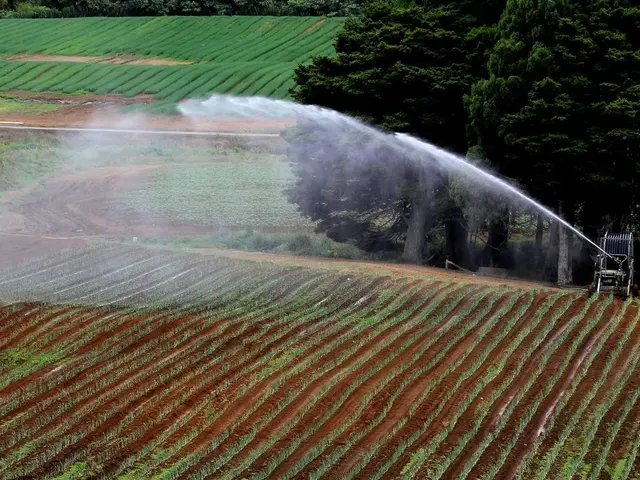Creating a Natural Water Feature for Your Garden: DIY Pond Construction Guide
In the heart of designer Will Tomson's lush garden lies a tranquil natural swimming pond, teeming with life and vibrant with colour. This article offers a step-by-step guide to creating your own ecologically rich natural swimming pond, based on expert advice and real-world examples.
## Planning and Site Selection
Choosing the right location for your pond is crucial. Avoid placing it too close to trees to prevent leaf and debris fall, which can disrupt the pond's water chemistry and clog filters. Ensure the site is level and that no contaminated surface water runs into the pond, as this can upset the biological balance. Design for easy access around the pond for maintenance and enjoyment.
## Design and Construction
Typical natural swimming ponds are designed with a swimming zone and a shallow, planted regeneration zone. The Murch family’s pond, for example, is 25m long and 5m wide. Use a biological filtration system, often integrated with the regeneration zone and planted with specific aquatic and marginal plants. Employ natural materials like clay, gravel, or sand for the liner and planting zones to support a healthy ecosystem.
## Plant Selection
Choose a mix of submerged, floating, and marginal plants. Submerged plants oxygenate the water, floating plants provide shade and reduce algae, and marginal plants stabilise the edges and filter nutrients. Examples include *Cyperus longus* (for filtering and oxygenation), *Nymphaea* (water lilies for shade and beauty), and native reeds or rushes for marginal planting.
## Ecosystem and Wildlife
Encourage beneficial insects, amphibians, and birds by providing varied habitats within the pond and surrounding area. Avoid fish for smaller ponds, as they can disrupt the balance by eating beneficial insects and stirring up sediment.
## Maintenance
Regularly remove debris such as leaves and organic matter to maintain water quality. Prune and thin plants as needed to prevent overgrowth and ensure the regeneration zone functions effectively. Occasionally test water quality to ensure the ecosystem remains balanced.
## Inspiration and Expert Tips
Learn from experts like Sarah Murch and Will Tomson, who share tips on TikTok and through garden articles, including planning, plant selection, and maintenance strategies. Engage with online communities and social media for creative ideas and troubleshooting advice.
## Key Actions
| Step | Key Actions | |---------------------|-----------------------------------------------------------------------------| | Site Selection | Avoid trees, manage runoff, ensure access | | Design/Construction | Swimming & regeneration zones, biological filtration, natural materials | | Plant Selection | Submerged, floating, and marginal plants (e.g., *Cyperus longus*, *Nymphaea*)| | Ecosystem | Encourage wildlife, avoid fish in small ponds | | Maintenance | Remove debris, manage plants, monitor water quality |
By following these steps, you can create a natural swimming pond that is both beautiful and ecologically vibrant, much like Will Tomson’s celebrated garden project. Always pick through any vegetation that's been removed for larvae and leave the pile on the bank for a while for organisms to find their way back into the water. The bubbles in the system draw the water through the gravel, and beneficial bacteria and microbes on the gravel's large surface area keep it clean. He also recommends making the regeneration zone half the total surface area of the pond. Use 'rafting' plants, such as waterlilies and water hawthorn, to cover a portion of the water's surface and cool it in summer. The central swimming area in the garden is bordered by a regeneration zone - a submerged, gravel-filled shelf with planting, which acts as a biological filter. The regeneration zone, which is a submerged, gravel-filled shelf with planting, acts as a biological filter in the pond. Will Tomson suggests making a natural swimming pond as big as possible for better temperature retention. Dragonflies and frogs are commonly seen around the natural swimming pond. Use large specimens and plant them densely to help establish a happy ecosystem quickly. Will Tomson recommends checking out the work of organic pool expert David Pagan Butler for his low-tech bubble filtration method, which offers a low carbon footprint and minimal running costs. A small amount of algae in a natural swimming pond is beneficial, as tadpoles feed on it. Creating an ecologically rich natural swimming pond in your garden involves thoughtful design, selection of appropriate aquatic plants, and careful planning for wildlife and maintenance.
- To create a thriving natural swimming pond, consider selecting a location that provides easy access for maintenance and enjoyment, while minimizing the risk of leaf and debris fall from nearby trees.
- For a successful natural swimming pond, incorporate a combination of submerged, floating, and marginal plants, such as Cyperus longus for filtration and oxygenation, Nymphaea for shade and beauty, and native reeds or rushes for marginal planting.
- To foster biodiversity in your home-and-garden lifestyle, design your pond to support beneficial insects, amphibians, and birds by providing varied habitats and avoiding the addition of fish in smaller ponds.




